
Using Propagation Trays: A Complete Guide for Succulent Lovers

Introduction
Succulent propagation is an art cherished by plant enthusiasts around the globe. This method of plant reproduction allows individuals to cultivate new plants from their beloved succulents, creating vibrant displays or expanding their plant collections without incurring high costs. Propagation trays play an essential role in this process, providing a specialized environment that optimizes conditions for root development and growth.
In this comprehensive guide, we will delve into the world of propagation trays, exploring their importance in succulent propagation, the various types available, and best practices for their use. Whether you are a beginner eager to learn or an experienced gardener looking to refine your skills, this guide is packed with valuable insights and practical tips to enhance your succulent propagation journey.
What Are Propagation Trays?
Propagation trays are specially designed containers that support the germination and rooting of cuttings and seeds. These trays typically feature multiple cells or compartments, allowing gardeners to propagate several plants simultaneously while maintaining organization and maximizing space. Made from various materials, such as plastic or biodegradable options, propagation trays provide excellent drainage and airflow, essential components for healthy root development.
The size and shape of propagation trays can vary widely. Some trays are designed for large batches of cuttings or seeds, while others focus on individual plants. Regardless of shape or size, all well-constructed propagation trays share key features that cater to cuttings' needs. They generally include drainage holes, a sturdy design that can withstand moisture, and a layout that promotes effective light distribution—an essential aspect when propagating succulents that thrive in bright light.
Importantly, a well-chosen propagation tray is an investment in your gardening success. The right tools can significantly simplify the propagation process and lead to healthier, more vibrant succulent plants.
Benefits of Using Propagation Trays for Succulent Lovers
Propagation trays offer numerous benefits that can enhance the success of your succulent propagation efforts. One of the primary advantages is the organization they provide. By using trays, you can categorize your cuttings based on variety or growth stage. This organization not only keeps your workspace tidy but also enables you to monitor the progress of each cutting closely.
Another compelling benefit is the efficient use of space. For plant lovers with limited room, propagation trays make it easier to optimize available areas by stacking trays or aligning them on a table or shelf. Unfortunately, untidy and haphazard propagation methods can lead to overcrowding and poor air circulation, both of which can inhibit healthy rooting. In contrast, propagation trays provide defined spaces for each cutting, ensuring that they receive adequate access to light and air.
 Everything You Need to Know About Propagation Using Cuttings
Everything You Need to Know About Propagation Using CuttingsFurthermore, propagation trays also help improve the success rate of propagating succulents. Since they provide a controlled environment, moisture levels can be managed more effectively. Ideal moisture levels are crucial for roots to develop without succumbing to fungal infections that thrive in overly damp conditions. By adjusting watering methods and carefully monitoring the humidity within the trays, you can promote successful rooting and growth.
Selecting the Right Propagation Tray

Choosing the right propagation tray is a vital step in your succulent propagation journey. The market offers various options, each catering to different needs and preferences. Before making a selection, consider factors such as material, size, and design, which can all impact your success.
Material Choices for Propagation Trays
Propagation trays typically come in plastic and biodegradable forms. Plastic trays are durable, reusable, and easy to clean, making them suitable for long-term use. However, it is essential to ensure that the plastic is free from harmful chemicals that can leach into the soil, affecting the plants' health.
On the other hand, biodegradable trays, made from materials like peat or pressed paper, offer an eco-friendly alternative. These trays decompose over time, potentially enriching the soil as they do so. They are excellent for those looking to minimize their environmental footprint but may not last as long as sturdier plastic options.
Deciding between the two materials often comes down to your gardening philosophy and how frequently you plan to propagate. Investing in a durable plastic tray initially may be worth it if you plan to propagate many succulents regularly. If you're focused on sustainability and fewer propagations, biodegradable trays may be the way to go.
Size and Cell Configuration
The size of your propagation tray is another essential factor to consider. For those just starting, smaller trays or those designed with fewer but larger cells may be more manageable. However, experienced gardeners might prefer larger trays with more cells to maximize output. Choose a size that aligns with your propagation goals and available space.
 Cultivating Rooting Hormones for Faster Succulent Growth
Cultivating Rooting Hormones for Faster Succulent GrowthIn addition to size, evaluating the cell configuration is crucial. Some trays feature deep cells that allow for more robust root growth, while others are shallow and more suitable for cuttings. Pick trays with compartments tailored to your succulents' propagation method. It is advisable to look for trays with separate cells that prevent overcrowding and entangled roots.
Preparing Your Propagation Tray
Preparing your propagation tray is a critical step in ensuring successful rooting of your succulent cuttings. Start with clean, sanitized trays to prevent the introduction of pathogens. A simple rinse with hot, soapy water followed by a thorough air-dry can suffice.
Once your trays are clean, it’s time to choose the right medium for your cuttings. A well-draining soil mix is vital for succulent propagation. Consider using a blend of potting soil and sand or perlite to create an optimal environment. This mixture ensures that moisture retention is balanced with adequate drainage—a critical factor when working with succulents that are prone to root rot.
Next, fill the trays with your chosen medium, pressing lightly to avoid air pockets but leaving enough room for the cuttings. It may be helpful to moisten the medium slightly with water before placing your cuttings to establish a conducive environment right from the start.
Propagating Succulents in Trays
Once your trays are prepped, it’s time to get hands-on with succulent propagation. Start by selecting healthy, mature succulents from which to take cuttings. Focus on firms, non-flowering plants, as flowering can draw energy away from root development. Use clean, sharp scissors or a knife to take cuttings—make sure to cut at an angle to increase surface area for potential rooting.
After processing your cuttings, allow them to callous for a few days in a dry, shaded environment. This crucial step helps prevent rot upon placement in the soil. Once your cuttings have developed a callous, place them into the prepared propagation medium.
Watering and Care
Watering techniques can make or break your propagation success. Initially, after planting your cuttings, it’s best to avoid watering them directly. Instead, mist the medium lightly to promote a humid environment. As roots develop, gradually increase watering frequency. Employ a drip or bottom-watering method, allowing the medium to soak without soaking the cuttings themselves.
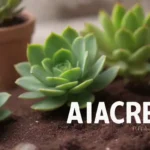 Understanding the Role of Stress in Succulent Propagation
Understanding the Role of Stress in Succulent PropagationMaintain optimal conditions by placing trays in a warm location with bright, indirect light. Succulents require ample light to thrive, but harsh direct sunlight can damage delicate cuttings. Monitor the moisture level closely to ensure the medium stays lightly damp but not soggy.
Common Mistakes to Avoid
While succulent propagation can be an enjoyable pastime, there are pitfalls that can hinder success. One common mistake is overwatering. It’s crucial to remember that succulents are drought-resistant plants; thus, they thrive best in dry conditions. Overly moist soil can lead to root rot and eventual plant demise, so always err on the side of caution when it comes to watering.
Another mistake is neglecting to provide adequate light. Many enthusiasts underestimate the importance of light during propagation, which can hinder the growth of new roots. If possible, utilize grow lights or place your trays in a location with bright, filtered sunlight.
Finally, overcrowding trays can lead to competition for resources, stunting growth. Ensure that each cutting has enough space to spread its roots without competing with neighboring plants. By paying attention to these factors, you can maximize your chances of successful succulent propagation.
Conclusion
Using propagation trays offers a fantastic opportunity for succulent lovers to expand their collections and create visually stunning arrangements. The organization, efficiency, and improved success rates that these trays provide make them indispensable tools in any gardener's arsenal. Through careful selection, preparation, and attentive care, you can ensure that your cuttings thrive and flourish.
As you embark on your propagation journey, remember the importance of patience. Not all cuttings root successfully on the first try, so don’t be discouraged. With practice, experience, and an ongoing commitment to learning, you'll become proficient in the art of propagating succulents.
Finally, enjoy the process! Gardening is not only about the final product but also about the journey you undertake as you nurture and cultivate your plants. By using propagation trays effectively, you'll cultivate a deep connection to the beauty of succulents and find joy in watching them thrive under your care.
 How to Trouble-Shoot Neglected Succulent Propagation Efforts
How to Trouble-Shoot Neglected Succulent Propagation EffortsIf you want to read more articles similar to Using Propagation Trays: A Complete Guide for Succulent Lovers, you can visit the Propagation Methods category.

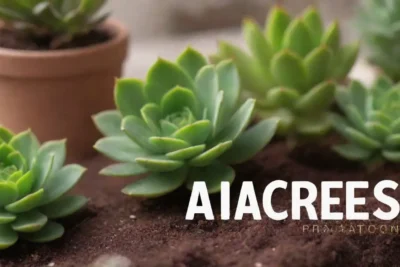

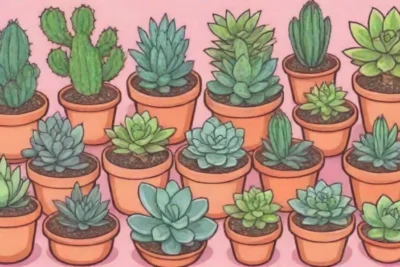
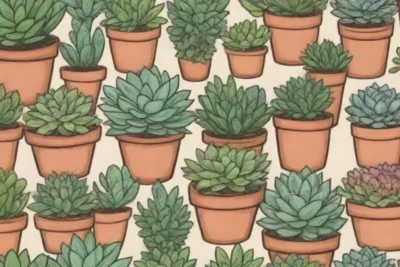
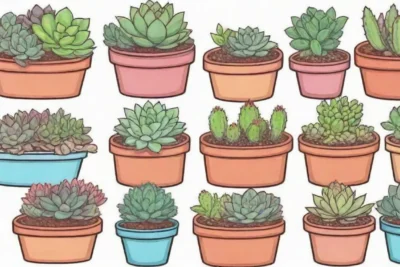
You Must Read